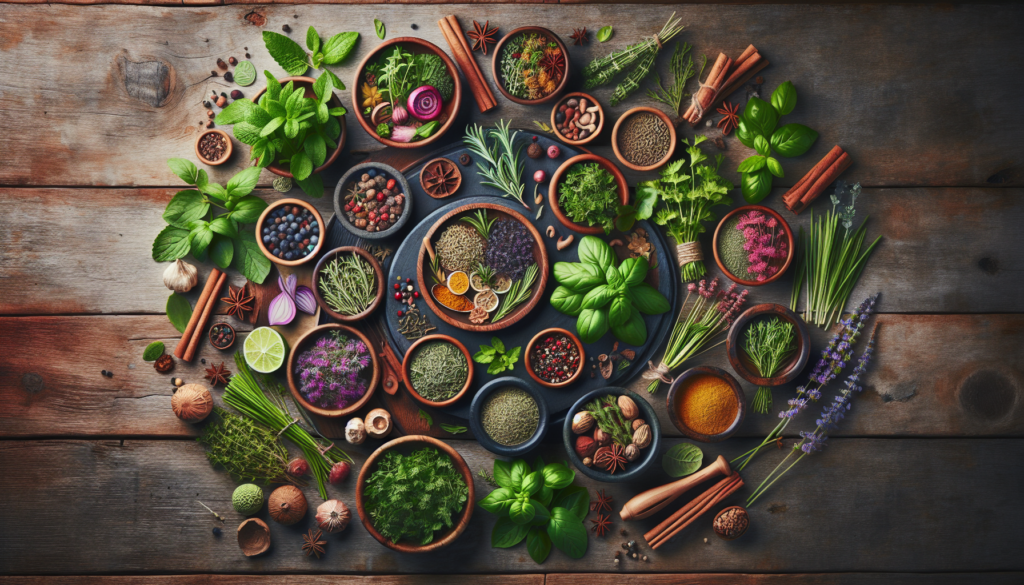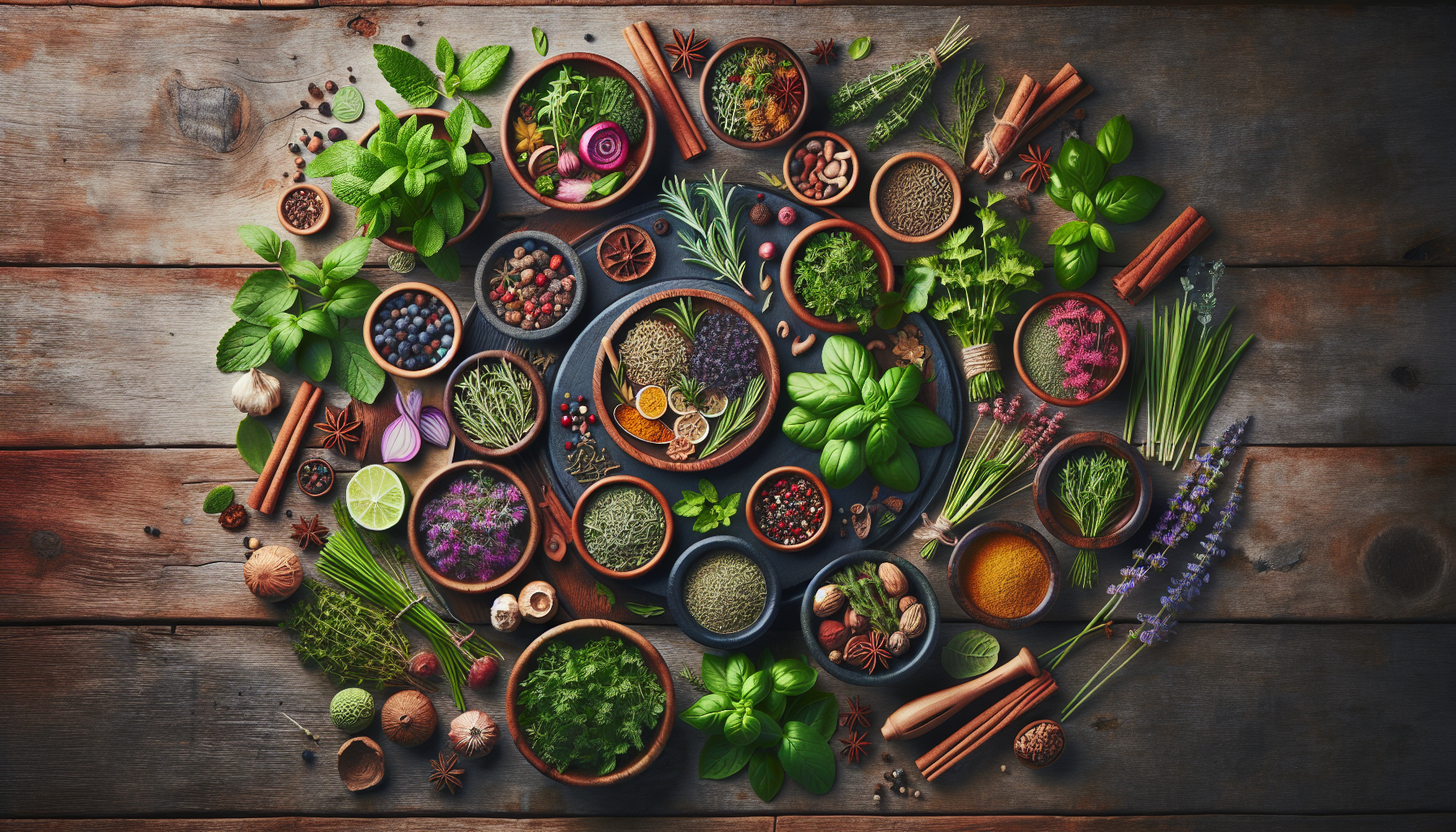So you’re curious about the most commonly used herbs, huh? Well, you’ve come to the right place! This article will give you the lowdown on the top 10 herbs that people just can’t seem to get enough of. From the classic favorites like basil and mint to the lesser-known powers of turmeric and dill, we’ll explore the fascinating world of herbs and their multitude of uses. So sit back, relax, and get ready to learn about the 10 most used herbs out there. Trust us, you won’t want to miss it!
What Are The 10 Most Used Herbs?
When it comes to cooking and adding flavor to our favorite dishes, herbs play a crucial role. Their aromatic qualities can transform a simple meal into a culinary masterpiece. While there are countless herbs available, some have stood the test of time and consistently rank among the most commonly used. In this article, we will explore the top 10 most used herbs and learn a bit about each one.

1. Basil
Basil is a versatile and widely loved herb with a fragrant aroma and a distinct flavor profile. It is a key ingredient in many Italian recipes, particularly in sauces like pesto. Basil leaves are often used fresh but can also be dried or preserved in oil. With its slightly sweet and peppery taste, basil adds freshness and depth to dishes like salads, soups, pastas, and even desserts.
2. Mint
Mint is another herb that is incredibly popular and well-known for its refreshing and cool flavor. It is commonly used in both sweet and savory recipes, adding a burst of freshness to dishes. Mint leaves are often used in salads, beverages like mojitos and teas, as well as in Middle Eastern and Mediterranean cuisine. Additionally, mint can be used in desserts, such as ice creams and chocolates, due to its sweet and minty taste.
3. Rosemary
Rosemary is a woody herb with needle-like leaves and a strong, aromatic fragrance. Its bold and slightly bittersweet taste makes it a popular addition to a variety of dishes. Rosemary shines in Mediterranean cuisine, particularly in roasted meats, stews, and bread. The robust flavor of rosemary complements well with potatoes, vegetables, and even fruits, like roasted peaches.
4. Thyme
Thyme is a small leafy herb known for its earthy and slightly minty flavor. Its versatility makes it suitable for both fresh and dried use. Thyme enhances the taste of various dishes, including meats, soups, stews, and roasted vegetables. It also pairs well with other herbs and spices, bringing a unique and aromatic touch to culinary creations.
5. Parsley
Parsley is a leafy green herb that is widely recognized as a versatile garnish and flavor enhancer. Its mild and fresh taste makes it a popular addition to a wide range of dishes. Parsley can be sprinkled over salads, used as a finishing touch on soups and stews, or incorporated into sauces and marinades. This herb not only adds a vibrant green color but also provides a subtle hint of flavor to many culinary creations.
6. Cilantro
Cilantro, also known as coriander, is an herb commonly used in ethnic cuisines such as Mexican, Indian, and Thai. It has a distinctive citrusy and slightly soapy flavor that is loved by some and disliked by others. Cilantro leaves are often used fresh in salsas, guacamole, curries, and salads. The seeds of the cilantro plant, known as coriander seeds, are also used as a spice in many dishes.
7. Sage
Sage is an herb with a savory, slightly peppery flavor and an earthy aroma. It is commonly used in Mediterranean and European cuisines, particularly in dishes like stuffing, roasted meats, and sausages. Sage leaves can be fried until crispy, providing a delightful texture and enhancing the flavor of various dishes. It is also often used in herbal teas and infusions for its reputed medicinal properties.
8. Oregano
Oregano is a herb with a robust and slightly spicy flavor. It is a staple in Italian and Greek cuisines, where it is used in dishes like pizzas, pastas, and grilled meats. Oregano can be used both fresh and dried, with the dried version providing a more intense flavor. Its versatility and ability to complement other herbs and spices make it a favorite among many home cooks and chefs.
9. Dill
Dill is an herb with feathery leaves and a delicate sweet flavor. It is often associated with pickles and seafood dishes, but its uses extend far beyond that. Dill can be used to enhance the flavor of sauces, salads, soups, and even bread. The fresh leaves of dill add a lovely touch when sprinkled over cooked vegetables or incorporated into dips like tzatziki.
10. Chives
Chives are slender, hollow leaves with a mild onion flavor. They are often used as a garnish or as an ingredient in various dishes. Chives are particularly popular in potato-based recipes, as they add freshness and a subtle onion taste. They can also be used in salads, soups, omelets, and even as a topping for baked potatoes or sour cream-based dips.
In conclusion, these 10 herbs – basil, mint, rosemary, thyme, parsley, cilantro, sage, oregano, dill, and chives – are the most commonly used herbs in culinary creations around the world. Each herb brings its own unique flavor profile and aroma, elevating the taste of dishes across various cuisines. Whether you’re a seasoned chef or an amateur cook, these herbs are essential additions to your kitchen pantry. So, the next time you’re preparing a meal, don’t forget to incorporate one or more of these versatile and flavorful herbs for that extra touch of culinary magic.

